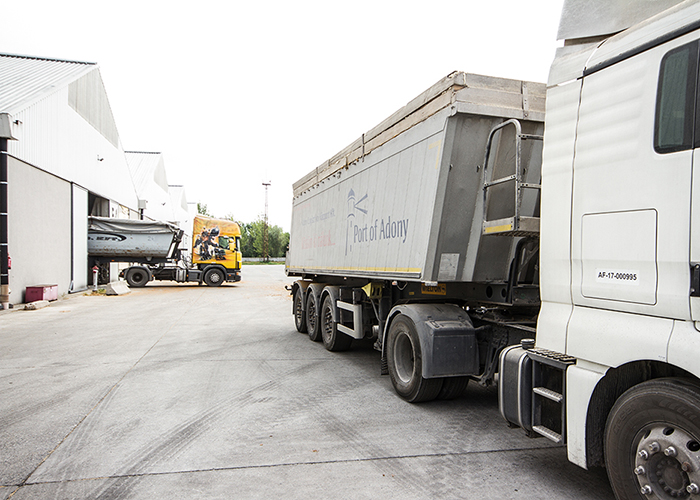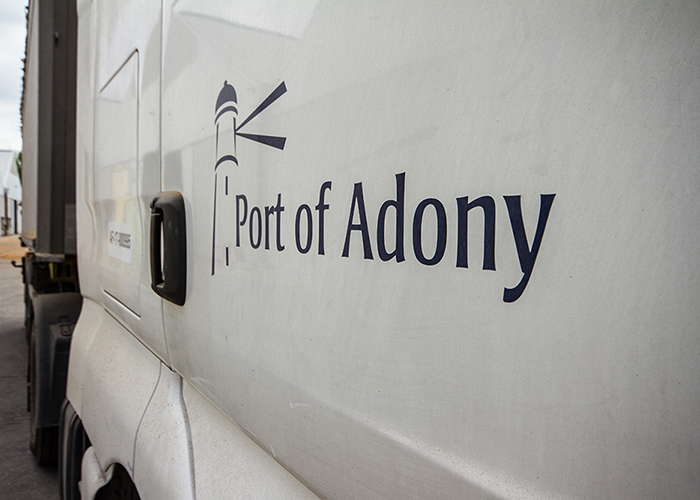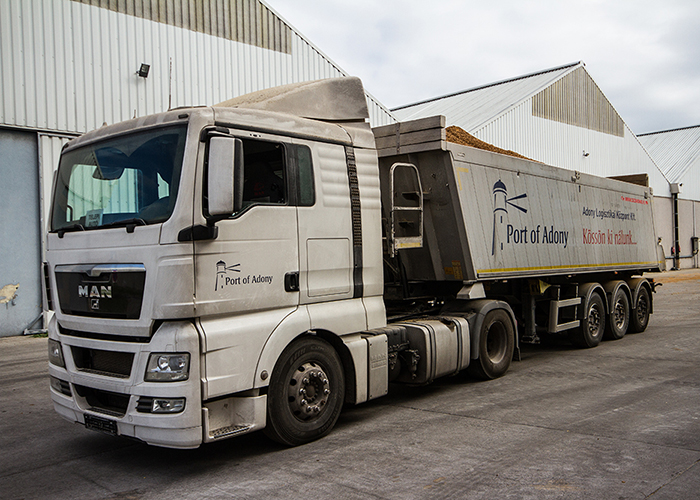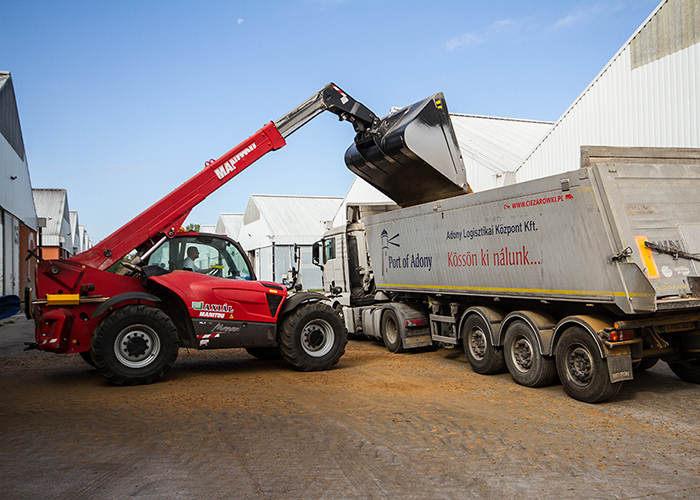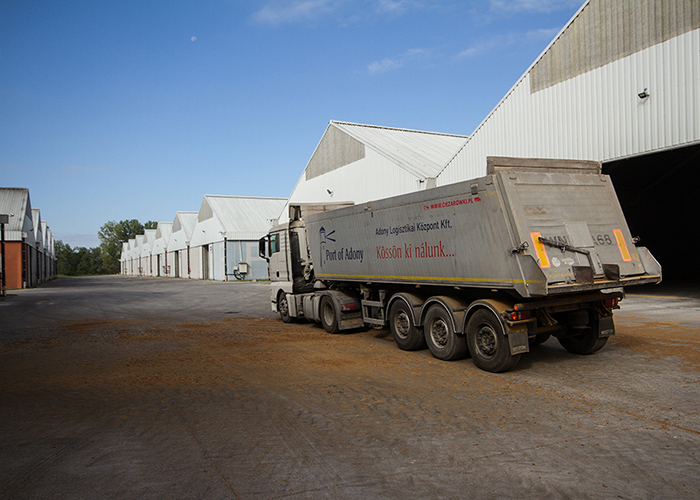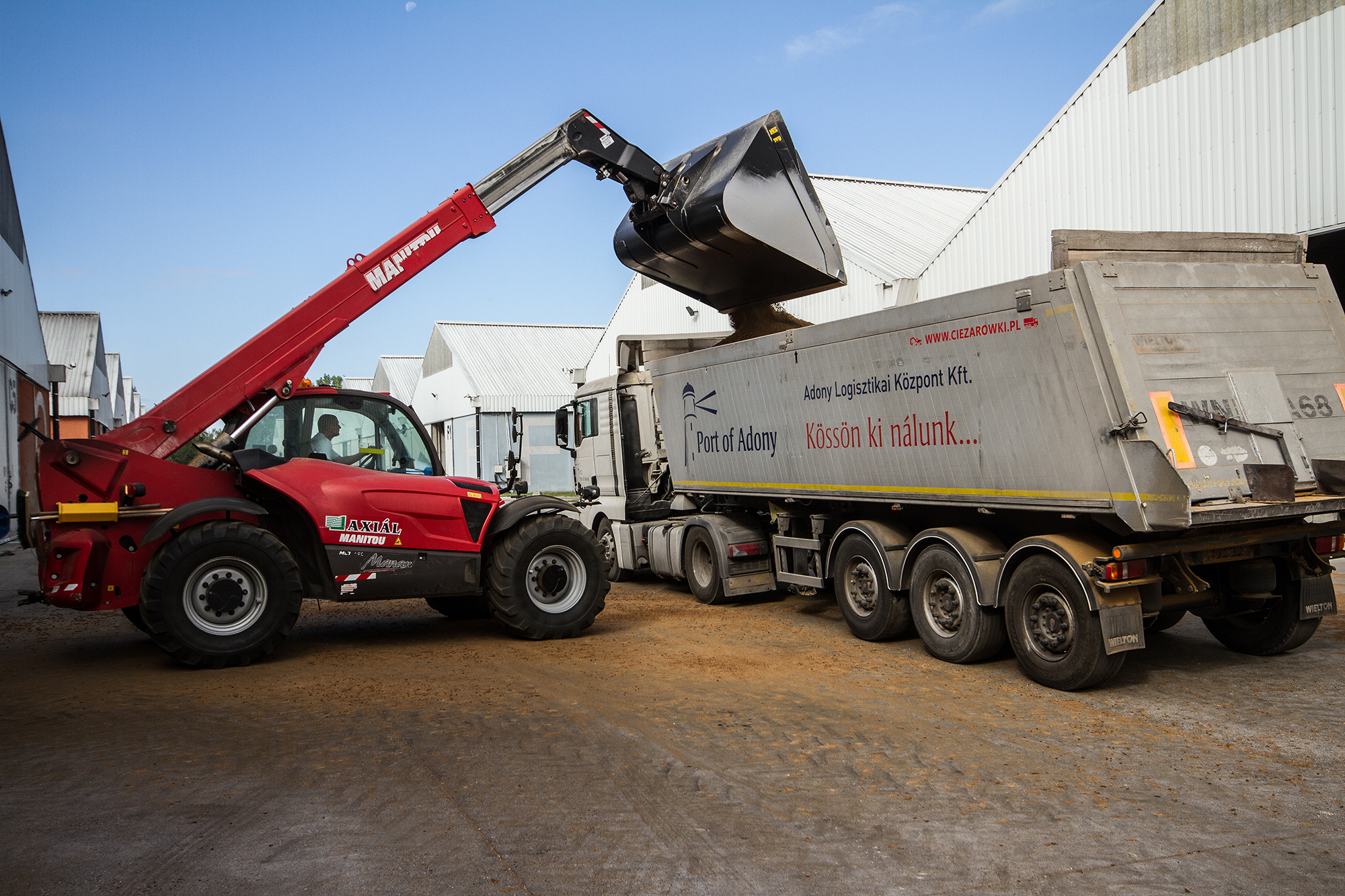
TRUCK LOADING / UNLOADING
Being almost in the middle of the country, we are optimally located for road access. 55 km south of Budapest, 75 km from Liszt Ferenc International Airport. Our western neighbour is the M6 motorway, 5 km away, which connects Hungary from the north to the south, while it also connects to the M8 motorway about 20 km south of us.
PORT OF ADONY
Our centre, with 84 covered flat warehouses, is in the Mezőföld region of Hungary, an ideal location for bulk grain storage and transport. During the harvest season, we are able to receive and move more than 10,000 tonnes of goods per day.
In addition to agricultural produce, we can also receive other bulk goods. Due to the relative proximity of Liszt Ferenc International Airport, we are also open to receiving internationally traded palettised general cargo.
In addition to a skilled workforce, flexible truck loading and unloading are supported by a goods receiving unit with parking lots on both sides of our Adony warehouse base, six 60-tonne road weighbridges and a number of different types of loaders for different tasks. In addition, we offer our customers extended opening hours to adapt to the seasonality of agriculture.
FROM TRUCKS INTO WAREHOUSES
Road vehicles arrive from Main Road 6 to the parking lots of the warehouse base, one to the north and one to the south of the site. After checking the data of the goods and recording them electronically, the goods are sampled and, after weighing, the truck moves on to the appropriate warehouse where the unloading takes place. The empty vehicle will then move on according to its task.
FROM WAREHOUSE ONTO TRUCKS
After checking the empty vehicles arriving at the site and weighing them empty, the trucks arrive at the warehouse storing the goods, and the goods are loaded onto the vehicles by a loading machine. Before leaving the site, the goods are electronically recorded, sampled and weighed.
FROM TRUCKS INTO RIVER VESSELS
Trucks arrive from Main Road 6 to the parking lots on the north or south sides of the warehouse base. The traffic controller collects goods data, and, after recording them electronically, the goods are sampled and weighed. If the goods meet the order in all respects, the truck then drives on to the given berth where the river vessel will receive the goods.
FROM RIVER VESSELS ONTO TRUCKS
The goods are lifted from the vessel by an excavator and loaded onto trucks. If the goods are not transported by trucks, they are transported to a warehouse to ensure that the vessel is emptied continuously. When trucks arrive at the site, they are checked empty and weighed empty before arriving at the port. After loading, the goods are electronically recorded and weighed before leaving the site.FROM TRUCKS INTO WAGONS
After uncoupling the trains arriving at the siding, the wagons are set up for loading. When the trucks arrive, the traffic controller collects goods data, and, after recording them electronically, the goods are sampled and weighed. If the goods fully meet the respective order, the truck then proceeds to the private siding, where it is conveyed by belt conveyors to the grain wagons.
FROM WAGONS ONTO TRUCKS
After the block train arriving at the site has been uncoupled and the wagons have been marshalled, the goods are loaded onto the trucks through the unloading slots of the wagons by means of a conveyor system. When trucks arrive at the site, they are checked empty and weighed empty before arriving at the siding. After loading, the goods are electronically recorded and weighed before leaving the site.
pcs
loading machine
mt
of grains handled per day
pcs
60-tonne truck weighbridge
